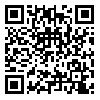BibTeX | RIS | EndNote | Medlars | ProCite | Reference Manager | RefWorks
Send citation to:
URL: http://jdisabilstud.org/article-1-1995-en.html
2- Department of Psychology, School of Educational Sciences and Psychology, University of Mohaghegh Ardabili
3- Department of Psychology, Rasht Branch, Islamic Azad University
4- Department of Psychology, Ardebil Branch, Islamic Azad University
Background & Objectives: Trichotillomania (hair-pulling disorder) is a psychological disorder that its treatment is one of the most challenging clinical and mental health issues. Despite various physical and social problems, especially psychological problems such as high anxiety and low self-esteem in people with trichotillomania, It is less commonly diagnosed and treated. To treat trichotillomania, various interventions based on different approaches have been proposed, including cognitive-behavioral therapies such as habit reversal and hypnotherapy. Because of few experimental and theoretical studies in this field, as well as the occurrence of psychological problems in students and their outcomes in adulthood, the present study compared the effect of habit reversal and hypnotherapy on increasing the self-esteem of students with trichotillomania and reducing their symptoms.
Methods: The present research method was quasi-experimental with a pretest-posttest design and a control group. The statistical population included all students referred to the Counseling Center and the Psychological Clinic of the Education Administration of Bilesvar City, Iran, to treat their trichotillomania in 2018-2019. Then, 45 eligible volunteers were randomly selected and divided into two experimental groups (habit reversal and hypnotherapy) and one control group (each group of 15 individuals). The inclusion criteria were a psychiatrist's diagnosis of trichotillomania based on the Diagnostic and Statistical Manual of Mental Disorders-Fifth Edition (DSM-5) criteria, aged 10 to 18 years, attending all intervention sessions, and not under psychological treatment at least one month before the intervention. The exclusion criteria included having a personality disorder or bipolar disorder, using psychotropic drugs or any other intervention one month before the study, and being unwilling to continue treatment. The Self-Esteem Questionnaire (Coopersmith, 1981) and the Milwaukee Inventory for Subtypes of Trichotillomania–Adult Version (MIST-A) (Flessner et al., 2008) were used to gather information in the pretest and posttest for three groups. Habit reversal therapy interventions in nine sessions and hypnotherapy in eight sessions were performed only for the experimental groups. The obtained data were sorted through descriptive statistics, including mean and standard deviation, and analyzed by inferential statistics, including 1-way analysis of variance, the Chi-square test, multivariate analysis of covariance, and Tukey post hoc test in SPSS software. The significance level for all tests was set at 0.05.
Results: By controlling the effect of pretest scores, the scores of focused trichotillomania (p=0.013) and automatic trichotillomania (p=0.017) in the two experimental groups decreased compared to the control group. Also, the score of the self-esteem variable in the two experimental groups increased compared to the control group (p=0.021). In addition, the hypnotherapy method had a more significant decreasing effect on the focused trichotillomania (p=0.027) and the automatic trichotillomania (p=0.026) compared to the habit reversal method. Hypnotherapy also had a more significant effect on self-esteem than the habit reversal method (p=0.024).
Conclusion: Based on the research findings, two methods of habit reversal therapy and hypnotherapy have a significant effect on reducing the symptoms of trichotillomania and increasing self-esteem in students with hair pulling. However, the hypnotherapy method is more effective in reducing the symptoms of trichotillomania and increasing self-esteem in students with hair pulling than the habit reversal.
| Rights and permissions | |
 |
This work is licensed under a Creative Commons Attribution-NonCommercial 4.0 International License. |



